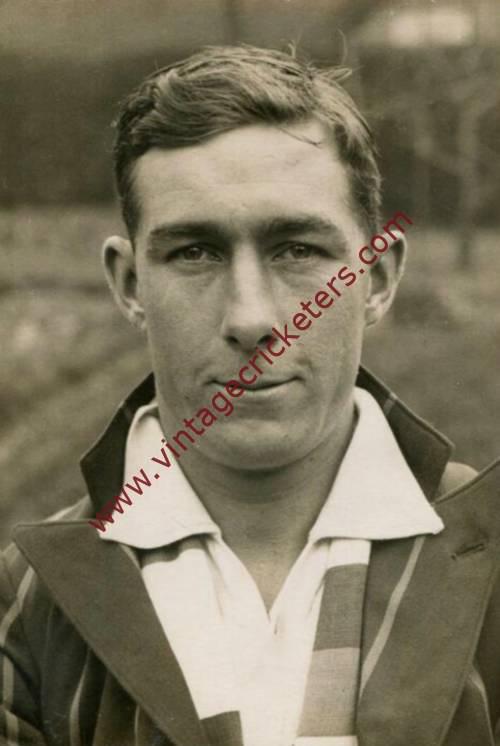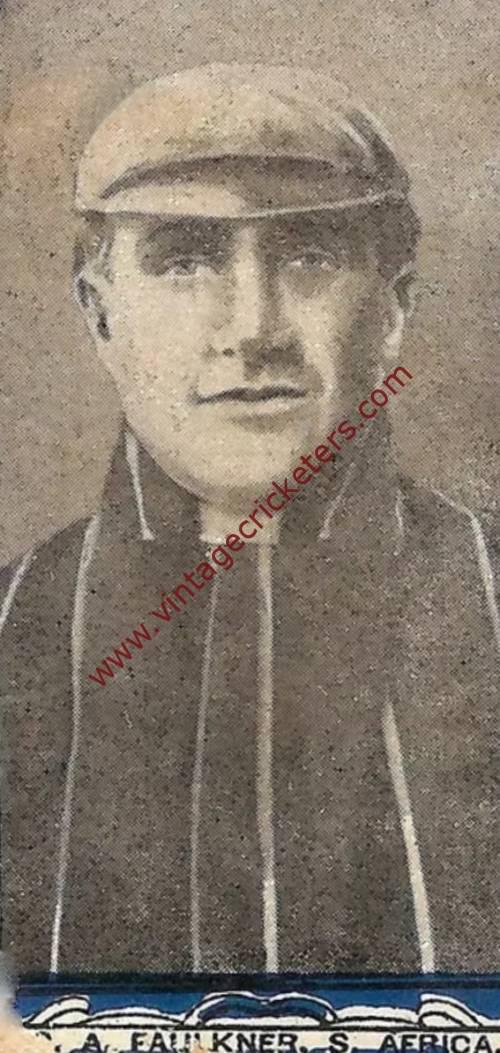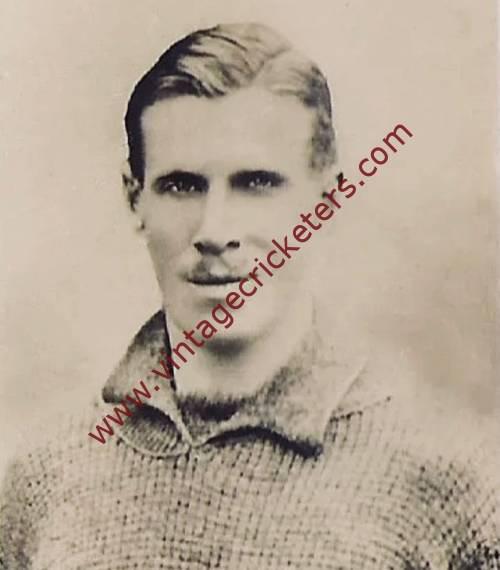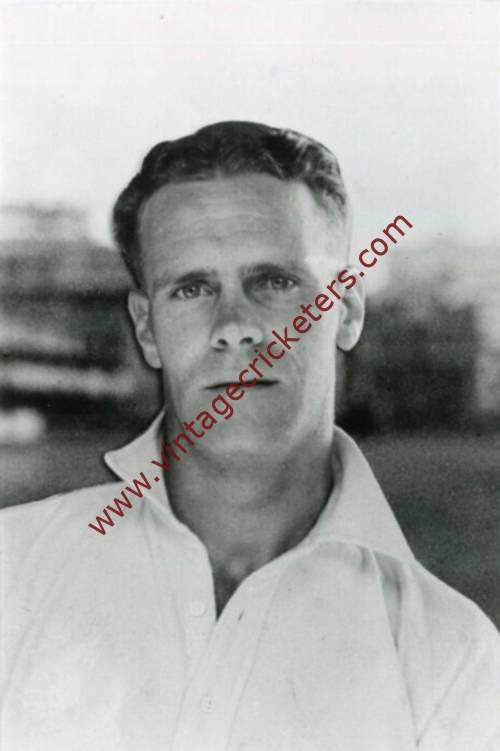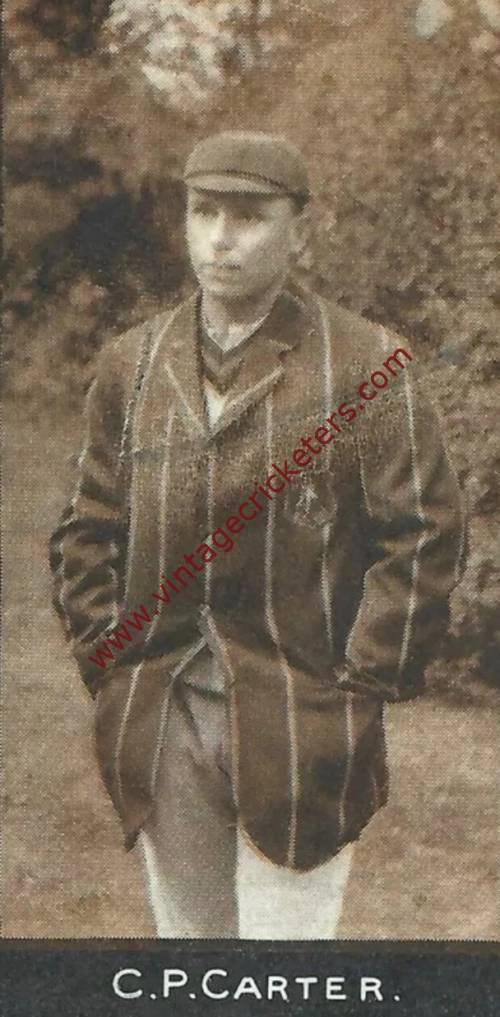Please choose your photo size from the drop down menu below.
If you wish your photo to be framed please select Yes.
Note: 16″x 20″not available in a frame.
Images can also be added to accessories. To order please follow these links
£8.95 – £49.95
Please choose your photo size from the drop down menu below.
If you wish your photo to be framed please select Yes.
Note: 16″x 20″not available in a frame.
Images can also be added to accessories. To order please follow these links
The maximum number of views of this element is reached.
Please contact the webmaster to enable unlimited views.
Port Elizabeth, Eastern Cape Province born wicket keeper Horace “Jock” Cameron, sometimes known as “Herbie”, was educated at Hilton College, Natal where he played cricket for the First XI. He made his debut for Transvaal in first class cricket his debut against the Hon. L.H. Tennyson’s English tourists in 1924-25, but after a slow start in the Transvaal team, Cameron, from 1925-1926 onwards, consistently showed his superb efficiency as a wicket-keeper and demonstrated his powerful hitting with the bat. He made his first hundred in first class cricket, 132 against Eastern Province, in 1927.
As a result, he was selected for South Africa to play the 1927-1928 English tourists and played in all five Tests against England, making his debut for South Africa at Johannesburg in December 1927. He made his first of ten Test half centuries in the Fourth Test on the same ground in January 1928, making 64 batting at No. 6 as South Africa won the Test by 4 wickets. His form in the Tests was sufficiently good that Cameron became a certainty for the England tour of 1929, where he kept wicket superbly and would certainly have totalled much more than 951 runs and 57 dismissals but for an injury in the Second Test at Lord’s when a good length ball from Harold Larwood rose sharply rose abruptly and struck Cameron on the head, knocking him unconscious; the effects of the injury prevented him playing again for around three weeks. A highlight of his tour was the game against Somerset where he made seven dismissals including taking 6 catches, and in all matches during that visit he scored 1,077 runs at an average of 32.63.
Firmly established as a Test regular, Cameron moved owing to his business from Transvaal to Eastern Province the following season, and in 1930-1931 was appointed captain of South Africa at Durban for the Fourth Test of 1930-1931 England tour, the third change in the leadership in four games, after playing one match for Western Province, making 41 not out in the second innings to help South Africa secure a draw. He celebrated this appointment with a fighting unbeaten innings of 69 in the final Test at Johannesburg that saved South Africa and showcased the growing adaptability of his batting and the ability to produce a fighting defence in addition to the hitting power he always possessed. Cameron captained South Africa during the 1931-1932 tour of Australia and New Zealand, but the burden undoubtedly affected his batting in the Tests – he averaged only 15.50 against Australia and South Africa lost all five Tests against Bradman’s batting and Grimmett’s wonderful bowling.
Returning to Transvaal for the 1932-1933 season, Cameron could only play once in the following two seasons, but was back at his very best in 1934-1935, hitting up a career-best 182 against Griqualand West and keeping wicket as well as ever.
As vice-captain of their tour to England in 1935, Cameron was the focal point of a South African side whose batting strength was sufficient to give it victory over England by one Test to nil (though England had the better of all four draws). In the only decisive result on a spinners’ wicket at Lord’s, Cameron hit his highest Test score of 90 in the first innings. At one stage he hit 58 out of his team’s 60 runs in half an hour. The Cricketer wrote: “We have seldom, if ever, seen a batsman who hits a ball so hard and so far with so little apparent effort.” By the end of the Test series he had played 26 Tests for South Africa, making 51 dismissals of whom 12 were stumped, and scoring 1,239 runs at an average of 30.21. In all his 107 first class matches, Cameron scored 5,396 runs at an average of 37.47 with 11 centuries and 28 half centuries, and dismissed 224 batsmen, 155 caught and 69 stumped.
Against Yorkshire, he hit one over from Verity for 30 runs and at Scarborough he finished the tour with another superb display of joyous batting in an innings of 160. In his famous innings against Yorkshire it was said that “Verity had Cameron in two minds: whether to hit him for four or six”. He also hit 132 against second-placed Derbyshire and 160 against an eleven raised by Shrimp Leveson-Gower. Louis Duffus wrote: “He began his 1935 tour in England by driving a ball out of the Worcester ground, and from that first day in May onwards he hit sixes all over English fields.”
Tragically, when considered probably the best wicket-keeper in the world, Cameron returned to South Africa he was, to the regret of the cricket world, immediately afflicted with typhoid fever. Treatment proved so ineffective that Cameron died less than two months after he had played his last game of cricket, aged 30. His loss was a crushing blow to South Africa: in 1935-36 they lost four of their five Tests against Australia due to Grimmett’s and O’Reilly’s formidable spin bowling (which Cameron’s hitting might well have made less dangerous) and it took them until the 1950’s to produce teams of comparable strength to that of the 1935 side. Cameron, for all his fearless hitting, will be chiefly remembered for his high place among wicket-keepers not only of South Africa but in his generation. Wisden said of him:
“His stumping of a batsman has been likened to the nonchalant gesture of a smoker flicking the ash from a cigarette–an apt simile of the speed and art of his deeds. Cameron’s concentration upon his job was always evident; some of his stumping efforts dazzled the eyesight. To place him second only as a wicket-keeper to Oldfield is not undue praise. He was neither flamboyant nor noisy and he took the ball cleanly; in fact, his style may be described as the perfection of ease and rapidity without unnecessary show. Last season he stumped 21 batsmen and caught 35; in the Final Test when only six England wickets fell he made two catches and stumped Hammond and Leyland beautifully.”
In its obituary notice The Times wrote: “He combined all those qualities of courage, modesty, generosity and cheerfulness which instinctively made themselves felt on the field of cricket, and also off it, to all those who were privileged to know him and who immediately recognised the influence of the man.”
During their tour of South Africa in 1935-36, to raise money for Cameron’s family the Australians played a baseball match against the Transvaal Baseball Club at the Wanderers Ground in Johannesburg. The match raised about 400 pounds.
Vintage Cricketers was founded in July 2019. There are more photographs of this cricketer in the Vintage Cricketers library, which are due to be loaded in due course. In the meantime, please send a message to us using the contact form at the bottom left of this page and we can arrange to prepare and publish all images of this cricketer if you have a particular interest in him.
| Weight | N/A |
|---|
